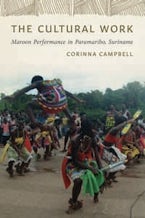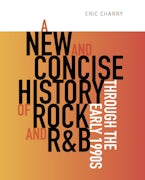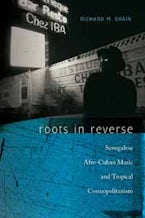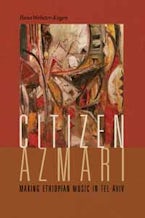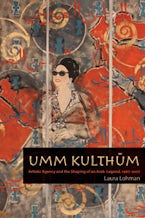- Home
- Music / Culture
- music
- social science
- Songs, Dreamings, and Ghosts

Songs, Dreamings, and Ghosts
The Wangga of North Australia
Series: Music / Culture
Sales Date: 2009-09-17
320 Pages, 7.00 x 10.00 in
A mesmerizing journey into the musical world of Australia's Aboriginal people.
Winner of the Stanner Award from the Australian Institute of Aboriginal and Torres Strait Islanders Studies (2006)
Aboriginal musicians receive songs both from an eternal realm known as The Dreaming and from the ghosts of deceased ancestors. Songs, Dreamings, and Ghosts is the first book-length study of wangga, a musical and ceremonial genre of Aboriginal people of the Daly Region of Northern Australia. This work is a labor of love, the culmination of nearly 20 years of field work and research by renowned ethnomusicologist Allan Marett, and represents the only comprehensive documentation of a single major genre of Aboriginal music. With first-hand, in-depth knowledge of Northwest Australia's Aboriginal cultures, Marett provides the reader with a penetrating description and analysis of this compelling musical practice. This book makes a significant contribution to knowledge of Aboriginal studies, and provides a rare glimpse into relatively unknown traditions and cultures. It includes illustrations, musical examples, and links to a web-based virtual CD loaded with samples of this fascinating music, closely linked to the text, at http://www.wesleyan.edu/wespress/wanggacd/.
List of Figures
List of Illustrations
List of Musical Examples
List of Maps
Virtual CD Track List
Acknowledgments
Linguistic orthography
PREFACE
INTRODUCTION
What the Walakandha Have Always Done
The major themes of wangga and the conventions by which are enacted in performance
The relationship between the Living and the Dead
Ceremonial reciprocity
Relationships between people and country
Liminality
The mediation of social change
Traditions of Scholarship in the Study of Aboriginal Music
The Enactment of Social Work though Music and the Decoding of Musical Texts
Fieldwork and Working Methods
CHAPTER 1: REPERTORIES, HISTORIES AND ORDERS OF BEING
Old Man Tulh
The Principle Repertories of wangga and Their Locations
Dreamings, Conception, and Song
Marritjevin and Marriammu orders of being
Song composition and ceremony: the drawing together of the Living and the Dead
Orders of being at Belyuen
Some historical reasons for the importance of Conception Dreamings at Belyuen
Conception, death and reincarnation
References to Dreamings and Dreaming sites on the Cox Peninsula
CHAPTER 2: DREAMING SONGS: SUSTAINING TRADITION
Dreaming Songs
Maralung's story about getting the song "Minmin Light"
How Walakandha and Ma-yawa wangga are received
Song dreaming at Belyuen
What exactly do the ancestors give to songmen?
Sustaining Tradition
Transmission of wangga at Wadeye
Transmission of wangga at Belyuen
Repertory loss
CHAPTER 3: CEREMONY
Myth
The Death of the Rainbow Serpent and wangga: themes of death and regeneration
Song genres and ceremonial reciprocity at Wadeye
Ceremonies
Burnim-rag ceremonies
Circumcision
Other performance contexts
CHAPTER 4: CONVENTIONS OF SONG AND DANCE
"Bangany-nyung Ngaya": an unmeasured wangga song from Belyuen
Establishing metre and tempo in the instrumental-introduction.
Structuring the vocal- and melodic sections
Structuring text and realizing it rhythmically in song
Breaking up the singing with instrumental-sections
Wrapping up the performance in the coda
Stabilizing form
"Yendili #2": an unmeasured wangga from Wadeye
Musical structure
Dance structure
How are dance phrases mapped onto the clapstick-beating?
Maminmangga's song
CHAPTER 5: THE WALAKANDHA WANGGA
"Truwu," the Most Popular of the Walakandha wangga
Modality, Melody and their Relationship to Song Lineage
Some Broader Observations on Text Structure and Melody in the Walakandha wangga Repertory
Philip Malanbuk's song about the Walakandha ancestors Berrida and Munggumurri
Some Broader Observations on Rhythmic Mode and Clapstick-Beating Patterns in the Walakandha wangga Repertory
CHAPTER 6: THE MA-YAWA WANGGA
"Walakandha Ngindji": a Ma-yawa wangga adapted from a Walakandha wangga original
The recorded sample
The text of "Walakandha #2" and its relationship to "Walakandha Ngindji"
Changing the rhythmic setting of the text
The setting of "Walakandha Ngindji" to Ma-yawa wangga Melody 1
"Watjen Danggi," an atypical song in the Ma-yawa wangga repertory
CHAPTER 7: BARRTJAP'S WANGGA
Barrtjap's Wangga and its Significance at Belyuen
Song texts and their meanings
The song-text lexicon and its rhythmic realization in song
The significance of melody and mode
Barrtjap's use of rhythmic mode
Six Songs in Six Rhythmic Modes
CHAPTER 8: BOBBY LAMBUDJU LANE'S WANGGA
Rak Badjalarr: The Island of the Dead
"Rak Badjalarr": a song about the relationship of people to country
Text structure and meaning
Melody
Rhythmic setting of the text
Two other performances of "Rak Badjalarr" and their implications for transmission
"Benmele," a song about sorcery that relates to a site on the Cox Peninsula
The Musical Conventions of Lambudju's Repertory
CHAPTER 9: THE MUSICAL CONVENTIONS OF THE DALY REGION REVISITED
Wangga texts
The diversity of text structure
Texts and meaning
The rhythmic treatment of texts
The placement of meaningful text within vocal-sections
The multivalency of meaningful text
Textual ellipsis
Words with double meanings
Stability and instability of text
Melody and mode
The Ma-yawa wangga
The Belyuen repertories: Tommy Barrtjap and Bobby Lambudju Lane
The Walakandha wangga
The manipulation of melody and text to reflect relationships within wangga owning groups
Rhythmic mode and dance
CHAPTER 10: WANGGA BEYOND THE DALY: PERFORMANCE IN THE WIDER DIASPORA
Wangga in the Barunga/Beswick Region
A performance of Barrtjap's songs at Barunga in the 1960s
Alan Maralung's Bunggridj Bunggridj wangga
Wangga in the Kimberley Region
The performance of two songs from Wadeye at Kununurra
"Wangga" in the northern and western Kimberley
The structure of three song sessions from the northern and western Kimberley
A performance of "Walakandha #2" at Myall's Bore (western Kimberley)
The ceremonial role and significance of wangga in the Kimberley
EPILOGUE
APPENDIX 1: RECORDINGS OF THE WALAKANDHA WANGGA
APPENDIX 2: RECORDINGS OF THE MA-YAWA WANGGA
APPENDIX 3: RECORDINGS OF BARRDJAP'S WANGGA
APPENDIX 4: RECORDINGS OF LAMBUDJU'S WANGGA
A recognized authority on Aboriginal music and culture, ALLAN MARETT is a professor of musicology and director of the Centre for Music Research at the University of Sydney.
"The culmination of nearly twenty years of ethnomusicological research among the Aboriginal peoples of the Daly region of northwest Australia (Marri-tjevin and Marri-ammu), this exemplary work extends and deepens our understanding of Aboriginal traditional song, while going a long way toward closing the gap between our scant knowledge of Aboriginal musical arts and our abundant knowledge of Aboriginal painting...Allan Marett is to be congratulated for his painstaking work in doing justice to the Aboriginal songmen whose work it is to keep their ancestral world alive."
~Michael Jackson, Journal of Folklore Research
""an intelligent and detailed look at and attitude towards music and performance outside Western traditions that really does a magnificent job of making the subject cleara scholarly book, butfascinating.""
~Robert M. Tilendis, The Green Man Review
""Marett provides a model for how to successfully integrate social and musical analysis, not just in the Australian context, but within ethnomusicology more generally This book is admirably concise and efficient in its distillation of an enormous amount of information into 325 pagesSongs, Dreamings, and Ghosts is one of the finest books on Australian music published to date.""
~Steven Knopoff, The World of Music
""The culmination of nearly twenty years of ethnomusicological research among the Aboriginal peoples of the Daly region of northwest Australia (Marri-tjevin and Marri-ammu), this exemplary work extends and deepens our understanding of Aboriginal traditional song, while going a long way toward closing the gap between our scant knowledge of Aboriginal musical arts and our abundant knowledge of Aboriginal paintingAllan Marett is to be congratulated for his painstaking work in doing justice to the Aboriginal songmen whose work it is to keep their ancestral world alive.""
~Michael Jackson, Journal of Folklore Research
""This bookdeserves the widest possible attention, not just because Marett is the doyen of Australian ethnomusicologists, and this is his masterwork, but because the art form he seeks to anatomise is dying.""
~Nicolas Rothwell, The Australian
"In this brilliant and passionate book, Allan Marett reaches profound insights on Australian Aboriginal music through detailed analysis of the musical and linguistic features of many wangga songs, some of their accompanying dances, and the social and cosmological processes enacted through their performance."
~Anthony Seeger, professor of ethnomusicology, UCLA
"It is rare to find such a detailed and developed musical analysis in a single publication. This is a major advance on other ethnomusicological studies on Indigenous Australia and will become the new standard against which to judge subsequent contributions.""
~Stephen Wild, Graduate Convenor in Music, Australian National University

